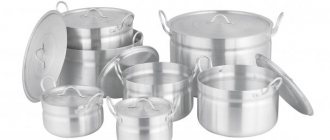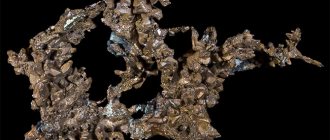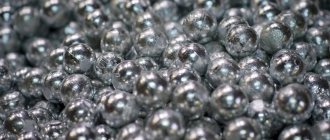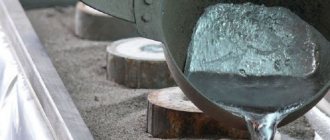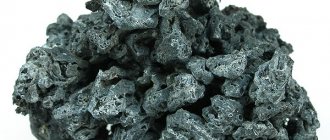The chemical compound with the formula Al₄C₃ is called aluminum carbide. Its appearance is represented by a yellowish crystalloid substance. The compound is very resistant to environmental influences, the melting point of aluminum carbide is 1400 ° C, and the relative density is 2.36 g/cm³. The structural lattice of Al₄C₃ is complex; it contains carbon atoms. They appear there in the form of anions. Aluminum carbide, like other inorganic compounds, has many applications. This substance belongs to the first group, the difference of which is the unchanged valence, typical for the metal normally.
Aluminum carbide: obtaining the substance
The substance can be obtained by combining metal with carbon, which must be placed in an arc furnace. Calcium carbide also contains a small content of Al₄C₃. When producing electrolytes, the compound is a product of graphite corrosion. The reaction of aluminum oxide with carbon forms Al₄C₃. The next way to obtain this substance is to simultaneously calcinate coke and aluminum at a temperature of 1800 degrees. It is extracted by specially trained pyrotechnicians and chemists. You should not try to obtain aluminum carbide at home, or in laboratories not intended for this purpose.
CARBIDES
CARBIDES
(from the Latin carbo - coal) - compounds of carbon with metals, as well as with boron and silicon.
These compounds have an amazing variety of physical and chemical properties. Thus, gold carbide Au2C2 explodes even when you try to pour it from a piece of filter paper on which it was dried. On the other hand, carbides of some elements (for example, boron and tantalum) do not decompose even at white heat temperatures and are so chemically inert that aqua regia does not affect them, and their hardness is close to diamond! Also on topic:
CHEMICAL ELEMENTS
For the first time, an unusual compound of metal with carbon (K2C2) was obtained in 1809 by the famous English chemist Humphry Davy. In 1863, the French chemist Marcelin Berthelot studied the properties of another carbide - the very unstable and easily explosive cuprous carbide Cu2C2. In 1878, the German metallurgist F. Müller, having dissolved steel samples in dilute sulfuric acid, isolated iron carbide Fe3C. But only at the end of the 19th century. French chemist Henri Moissan, famous for obtaining fluorine, synthesized many of these unusual compounds and studied their properties. He obtained carbides by heating mixtures of charcoal with various metals, their oxides or carbonates to a very high temperature. To do this, he used the heat of a voltaic arc in an electric furnace of his own design.
Carbides, as it turns out, can be obtained not only in the laboratory. Even before Moissan’s work, the Austrian scientist E. Weinschenk in 1889 discovered the mineral cohenite in meteorites, which is a mixed carbide of iron, cobalt and nickel with the composition (FeNiCo)3C. And Moissan himself in 1904 discovered in a meteorite brought from Diablo Canyon in Arizona a dark green mineral, which is silicon carbide SiC. This mineral was named moissanite in honor of the scientist.
Also on topic:
CARBON
Previously, carbides were classified according to their resistance to water and acids, as well as what gases were released during their decomposition. Modern classification takes into account the type of chemical bond between atoms in carbides - this is what the physical and chemical properties mainly depend on. In accordance with this classification, carbides can be divided into three groups, which differ quite significantly in their properties.
The first group includes the so-called salt-like carbides with ionic bonds. These carbides form alkali and alkaline earth metals, aluminum, rare earth elements, and actinides. Their composition sometimes corresponds to the typical valencies of metals (Al4C3), and sometimes does not (Be2C). Many ionic carbides can be obtained directly from elements (Ca + 2C ® CaC2) or by reduction of oxides with carbon (CaO + 3C ® CaC2 + CO). The ionic nature of the bond results in a high melting point; for example, calcium carbide CaC2 melts at 2300°C, thorium carbide ThC2 - at 2655°C. Ionic carbides are easily decomposed by water or dilute acids - hydrolyzed. In this case, various hydrocarbons and metal hydroxide are formed. The most famous example is the production of acetylene by hydrolysis of calcium carbide: CaC2 + 2H2O ® Ca(OH)2 + C2H2. Acetylene is also released during the hydrolysis of Na2C2, K2C2, etc. Therefore, such carbides can be considered as acetylene derivatives in which hydrogen atoms are replaced by metal atoms. In this case, metal cations and C2–2 anions are located in the corresponding sites of the crystal lattice. The salt-like nature of these carbides is confirmed by the possibility of their electrolysis in the molten state. It is interesting to note that pure calcium carbide is colorless crystals, although they are not easy to see, since the usual technical product is brown to black in color.
The interaction of alkali metal carbides with water is extremely violent. So, if potassium carbide is simply doused with water, a violent reaction will occur, which is accompanied by an explosion of such force that the released acetylene immediately decomposes with the release of coal. To carry out the reaction K2C2 + 2H2O ® 2KOH + C2H2, you must slowly pass water vapor over the carbide.
In some cases, ionic carbides are formed directly by passing acetylene through solutions of metal salts. So carbides of silver, copper(I), gold and mercury, which are more often called acetylenides. Alkali metal acetylenides can be prepared by the action of acetylene on free metals. In dry form, heavy metal acetylenides easily decompose explosively. Hydrolysis of ionic carbides of other metals shows that they “originate” from other hydrocarbons. For example, the hydrolysis of aluminum carbide releases methane: Al4C3 + 12H2O ® 4Al(OH)3 + 3CH4 (beryllium carbide Be2C is also hydrolyzed), and the hydrolysis of magnesium carbide produces methyl acetylene: Mg2C3 + 4H2O ® 2Mg(OH)2+ HC≡C –CH3. Interestingly, magnesium carbide of a different composition, MgC2, produces only acetylene upon hydrolysis. Sometimes, during the hydrolysis of ionic carbides, hydrocarbons are released together with hydrogen, which partially hydrogenates unsaturated hydrocarbons. Manganese carbide decomposes with the release of almost equal amounts of hydrogen and methane: Mn3C + 6H2O ® 3Mn(OH)2 + CH4 + H2. Carbides of rare earth metals and thorium, when decomposed by dilute acids, do not release pure acetylene, but its mixture with methane, ethylene and other hydrocarbons. For example, the hydrolysis of cerium carbide CeC2 produces a mixture of acetylene and methane in a 4:1 ratio, as well as some ethylene and liquid and solid hydrocarbons (the composition of the products depends on the reaction conditions). Uranium carbide produces even more liquid and solid hydrocarbons during hydrolysis.
The release of hydrocarbons during the hydrolysis of carbides allowed D.I. Mendeleev to put forward the so-called carbide theory of the origin of oil in the depths of the Earth from inorganic substances. According to Mendeleev, in the depths of the globe there should be molten metals, mainly iron, which together with carbon produces carbide. During mountain building, cracks form in the earth's crust through which water penetrates into the depths. By acting on iron carbide and carbides of other metals, water (in the form of steam) forms hydrocarbons, for example: 2FeC + 3H2O ® Fe2O3 + C2H4. Gaseous hydrocarbons rise through the same cracks closer to the surface, where they accumulate in porous layers. However, when in the 60s. 20th century The composition of oil hydrocarbons was studied in detail; it turned out that the mixture of “artificial hydrocarbons” formed during the hydrolysis of carbides differs sharply in composition from the natural mixture. In addition, all oils obtained inorganically are optically inactive, while natural oil is optically active. Based on these, as well as a number of other facts, the inorganic theory of the origin of oil has been criticized, and many scientists now believe that oil has a biological origin.
The second group includes carbides, which form transition metals of groups IV–VII, as well as cobalt, iron and nickel. These are metal-like compounds with a different structure. In them, carbon atoms, which are small in size, are not connected to each other and are located in the voids between the metal atoms. Different packings of metal atoms in the crystal lattice result in different compositions of carbides even for the same metal; for example, chromium forms carbides of the composition Cr3C2, Cr4C, Cr7C3, etc. These carbides (they are called interstitial carbides) are often distinguished by high hardness and very high melting temperatures. For example, tantalum and hafnium carbides TaC and HfC are the most refractory of the known substances (melt at 3985 and 3890°C, respectively).
Metal-like carbides have high electrical conductivity and very high chemical resistance to aggressive environments (many of them do not dissolve even in aqua regia). They are used for hardening cast iron and steel (carbides of iron, chromium, tungsten, molybdenum), as well as for the production of very hard alloys that are used for metal cutting (carbides WC, TiC, TaC, VC, Cr3C2). For example, hard tips of cutters and drills are made from pobedit - sintered tungsten carbide powder WC with the addition of metal cobalt. A very important role is played by iron carbide Fe3C (cementite) - solid crystals that are part of the structure of cast iron and steel.
Tungsten carbide WC is also used for the manufacture of drill bits, parts of equipment for the production of synthetic diamonds, and for applying wear-resistant coatings to metal surfaces. Titanium carbide is interesting due to its striking manifestation of nonstoichiometry: the composition of this compound is expressed by the formula TiC x
, where
x
ranges from 0.49 to 1 (
see
STOICHIOMETRY). This substance, like tungsten carbide, is used as a component of heat-resistant, heat-resistant and hard alloys, for the production of wear-resistant coatings, for the manufacture of refractory crucibles in which almost any metal can be melted (the carbide itself melts at 3257°C). Titanium carbide is used to line the inner walls of high-temperature furnaces.
The third group includes covalent carbides. They are formed by silicon and boron - carbon's neighbors on the periodic table, close to it both in atomic size and electronegativity. Silicon carbide SiC (technical name - carborundum) in its pure form is colorless crystals, but impurities often color it in various colors, even black. This compound is similar in structure to diamond; A silicon carbide lattice can be obtained by replacing half of the carbon atoms with silicon atoms in the slightly expanded diamond lattice. This substance has very high hardness; in addition, it has the properties of a semiconductor. It is used to make grinding bars and wheels, refractory materials for furnaces and foundry machines, heating elements for electric furnaces, and semiconductor diodes.
Boron forms two carbides with a precisely known structure - B4C and B13C2. The most important is the first of them - black shiny crystals, which in hardness are second only to diamond and boron nitride BN. This carbide is used for the manufacture of abrasive and grinding materials and as a semiconductor. Carbide enriched with the 10B isotope is used as a neutron absorber in nuclear reactors.
Ilya Leenson
Physical and chemical properties
The main property of the substance is its ability to interact with water, oxygen and sodium hydroxide. In addition, aluminum carbide can melt, refract and dissolve. It has an enthalpy of formation ∆Н = -209 (S = 88.95), Gibbs energy = -196 t, molar heat capacity = 116.8. Refractive index of aluminum carbide = 2.7 for 20 degrees. Al₄C₃ can interact with many chemical elements, forming well-known compounds needed in industry. An example is one of the natural gases – methane. It can be obtained by mixing aluminum carbide with water. In this case, H2O acts as a solvent for the metal, as a result of which the main compound decomposes.
Chemical properties of aluminum carbide. Chemical reactions of aluminum carbide:
The chemical properties of aluminum carbide are similar to those of other metal carbides. Therefore, it is characterized by the following chemical reactions:
1. reaction of aluminum carbide and hydrogen:
The reaction produces aluminum and methane.
2. reaction of aluminum carbide and oxygen:
As a result of the reaction, aluminum oxide and carbon monoxide (IV) are formed.
3. reaction of aluminum carbide and chlorine:
The reaction produces aluminum chloride and carbon (IV) chloride (carbon tetrachloride).
4. reaction of aluminum carbide, sodium hydroxide and water:
As a result of the reaction, sodium tetrahydroxoaluminate and methane are formed.
5. reaction of aluminum carbide and nitric acid:
The reaction produces aluminum nitrate and methane.
Similar reactions of aluminum carbide occur with other acids.
6. decomposition reaction of aluminum carbide (reaction of aluminum carbide and water):
As a result of the decomposition reaction of aluminum carbide (the reaction of aluminum carbide and water), aluminum hydroxide and methane are formed. This reaction is a laboratory method for producing methane.
7. thermal decomposition reaction of aluminum carbide:
Al4C3 → 4Al + 3C (t > 2200 o C).
The thermal decomposition reaction of aluminum carbide produces aluminum and carbon.
Applications of aluminum carbide
Al₄C₃ is used in various types of industries. When aluminum carbide is produced using graphite particles, a very strong material is formed. Tools containing this compound have the same hardness as topaz. Typically, aluminum carbide is added to cutting objects used on machine tools, as medical equipment, etc. In addition, this compound is a necessary material in pyrotechnics. It has been used in this area for a long time, and so far no replacement has been found for it. Here aluminum carbide is necessary to produce sparks. Its presence in pyrotechnic works depends on what and in what quantity gunpowder is used. Another area of application of the substance is the chemical industry, where the compound is necessary for the formation of various products, in particular organic gases.
Examples of problem solving
| Exercise | The molar mass of the nitrogen-hydrogen compound is 32 g/mol. Determine the molecular formula of a substance whose mass fraction of nitrogen is 85.7%. |
| Solution | The mass fraction of element X in a molecule of the composition NX is calculated using the following formula: |
Let's calculate the mass fraction of hydrogen in the compound:
ω(H) = 100% - ω(N) = 100% - 85.7% = 14.3%.
Let us denote the number of moles of elements included in the compound as “x” (nitrogen), “y” (hydrogen). Then, the molar ratio will look like this (the values of relative atomic masses taken from D.I. Mendeleev’s Periodic Table are rounded to whole numbers):
This means that the simplest formula for combining nitrogen with hydrogen will be NH2 and a molar mass of 16 g/mol [M(NH2) = Ar(N) + 2×Ar(H) = 14+ 2×1 = 14 + 2 = 16 g/mol ].
To find the true formula of an organic compound, we find the ratio of the resulting molar masses:
This means that the indices of nitrogen and hydrogen atoms should be 2 times higher, i.e. the formula of the substance will be N2H4. This is hydrazine.
| Exercise | Establish the mass formula of a substance containing 26.5% potassium, 35.4% chromium and 38.1% oxygen. |
| Solution | The mass fraction of element X in a molecule of the composition NX is calculated using the following formula: |
Let us denote the number of moles of elements included in the compound as “x” (potassium), “y” (chromium) and “z” (oxygen). Then, the molar ratio will look like this (the values of relative atomic masses taken from D.I. Mendeleev’s Periodic Table are rounded to whole numbers):
x:y:z = ω(K)/Ar(K) : ω(Cr)/Ar(Cr) : ω(O)/Ar(O);
This means that the formula for the compound of potassium, chromium and oxygen will be KCrO4. This is potassium chromate.
Source
What is methane?
This compound belongs to the organic group; its structure is a simple hydrocarbon and has the formula CH4. Methane reacts little with water and is odorless and colorless. The gas belongs to the group of alkanes and is quite resistant to various chemical reactions. It is believed that methane is not dangerous to human health, however, some scientists claim the opposite. People who have constant contact with the gas experience changes in the central nervous system. Methane is explosive, so in industrial production it is necessary to carefully monitor its concentration in the air. Due to the fact that the gas is odorless, it is quite difficult to notice a leak. For this reason, enterprises install special sensors that record its level.
Physical properties
When choosing almost any material, you should pay most attention to physical properties. For the one under consideration they are as follows:
- The compound has a crystalline structure.
- The melting point is 2300 °C. It is worth considering that such a figure is characteristic only of the pure composition. The addition of various impurities to the composition causes the melting point to drop significantly.
It is worth considering that calcium carbide in most cases is in a solid state. In addition, the color can vary from gray to brown. The physical properties of calcium carbide determine its widespread use in a wide variety of industries.
Methods for producing methane
Due to the fact that gas is a natural compound, it is not always produced in the laboratory.
Methane is produced under anaerobic conditions; this occurs as a result of fermentation processes in swamps, animal intestines, and overly wet soil. According to scientists, one of Saturn's moons contains liquid mixtures containing this gas on its surface. Methane is also one of the constituent parts of the atmospheres of large planets. The highest methane content is observed in natural, mine and swamp gases. In industrial conditions, gas is produced by hydrogenation and coking of coal. Methane production is also carried out in laboratories. One way to make it is by heating acetic acid and sodium hydroxide (or lime). The latter substance is also combined with acetate as a result of melting, which also results in the formation of methane. Both methods do not require the presence of water. The third method of producing gas is hydrolysis, which aluminum carbide undergoes. In this case, methane is formed faster. The hydrolysis method is also less expensive since it does not require exposure to high temperatures.
Transportation and storage
Calcium carbide powder decomposes almost instantly when exposed to moisture. This produces acetylene, which in high concentrations is flammable and explosive. That is why it is necessary to pay quite a lot of attention to the storage of calcium carbide, for which cans and special drums are often used. Other storage features include the following:
- The released acetylene is lighter than air, so it accumulates at the top. It is worth considering that it has narcotic effects and can spontaneously ignite.
- When producing large volumes of a substance, special attention is paid to safety precautions. Special packaging is used for packaging.
- To open the package, use tools that do not cause sparks.
- If the substance gets on the skin or mucous membrane, it must be removed immediately. In this case, the affected surface is treated with a special cream or other protective and healing substance.
- According to established rules, transportation can only be carried out using a covered vehicle. However, delivery by air is prohibited.
Transport container
Regulations also prohibit storing calcium carbide with other chemicals and heat sources. This is because the resulting gases can react chemically with other chemicals and ignite.
Applications of aluminum carbide in industrial chemistry
In addition to hydrolyzing the compound, it can also be used as a reagent. This use of aluminum carbide is necessary for determining the content of certain substances. In particular, this way you can detect a valuable gas - tritium, which is present in water. In addition, a combination salt can be obtained from aluminum carbide. It is obtained, like methane, by combining a substance with water. This salt is called sodium tetrahydroxoaluminate. It is necessary for coloring fabrics. The production and use of carbide are very important for various industries, so the costs of its production are quite high. Funds for the purchase of the substance are allocated by the state.
Structure [edit]
Aluminum carbide has an unusual crystal structure, which consists of alternating layers of Al 2 C and Al 2 C 2. Each aluminum atom is coordinated to 4 carbon atoms, forming a tetrahedral arrangement. Carbon atoms exist in 2 different binding environments; one is a deformed octahedron of 6 Al atoms at a distance of 217 . The other is a distorted trigonal bipyramidal structure of 4 Al atoms at 190–194 pm and a fifth Al atom at 221 pm. [3] [4] Other carbides (IUPAC nomenclature: methides) also have complex structures.
Reactions[edit]
Aluminum carbide hydrolyzes to release methane. The reaction occurs at room temperature but accelerates rapidly when heated. [5]
Al 4 C 3 + 12 H 2 O → 4 Al (OH) 3 + 3 CH 4
Similar reactions occur with other proton reagents: [1]
Al 4 C 3 + 12 HCl → 4 AlCl 3 + 3 CH 4
Reactive hot isostatic pressing (tipping) at ≈40 MPa of appropriate mixtures of Ti, Al 4 C 3 graphite for 15 hours at 1300 °C produces predominantly single-phase samples of Ti 2 AlC 0.5 N 0.5, 30 hours at 1300 ° C. C produces predominantly single-phase Ti2AlC (titanium-aluminum carbide) samples. [6]
What is carbide?
Homemade bombs. This is what comes to mind first when we hear the word carbide . And no, the production of these dangerous toys was not carried out by defense industry enterprises, but, as a rule, by boys, about ten years old.
Twenty years ago it was a favorite pastime among teenagers. Now everyone sits at their tablets, but back then the world was ruled by the inquisitive mind of a child who strove to try everything in practice.
In order to feel like Rimbaud, you needed to get one miracle stone. Children most often found them at construction sites. And then everything was simple: a plastic vessel, a stone, water, a tightly screwed cap. All this was zealously shaken, and at best, thrown away. And in the worst case, the “shell” exploded right in the hands, then injuries could not be avoided.
Read also: Aluminum is an alloy or metal
There were also safer ways to use the find, for example, simply throwing it into a puddle, then you could observe something similar to the effect of modern bath bombs. So what kind of popular “toy” is this? Most of us believed that nature produced carbide as we know it. But actually it is not. And today you will see this.
So, this substance is always very hard, plus, in order to melt it, you need to make a remarkable effort. They look like dark, light, greenish stones, or powder, it all depends on the composition. Its shelf life is short, usually six months. It will not be possible to place containers in a general warehouse; such potentially dangerous substances must have their own compartment.
As you already know, carbide constantly strives to explode. Moreover, some connections do not even need special conditions. It is enough just to pour the powder from container to container, and it can suddenly explode.
